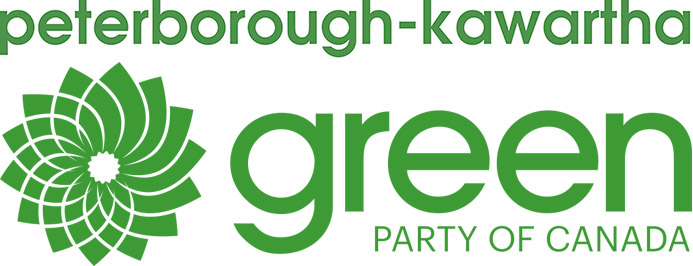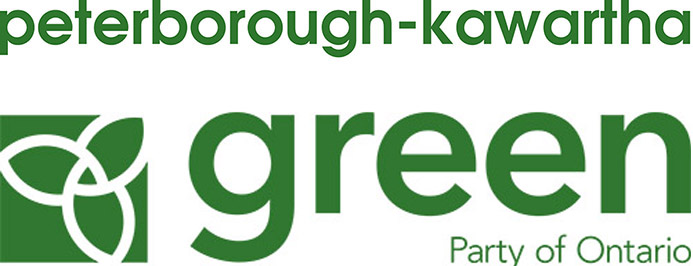Where “development” and “environment” meet: enacting conservation plans. Modeled on the Oakridges Moraine Conservation Act, which protects the water in the Peterborough-Kawartha region, including neighboring ridings, and was passed by a previous Conservative government in 2001, the Green Party’s Bill 71 protects the Paris Galt Moraine. We have
It’s great to see Mike launching this bill in one of the public conference rooms at the legislature. Here are some of the main points he makes:
— The environmental commissioner of Ontario reported the staggering loss of Ontario’s wetland: 72% in Southern Ontario alone. Also, that raw sewage was dumped into waterways 1327 times.
— The City of Guelph’s water conservation strategies have succeeded in uncoupling population growth from water use. That is, the city’s population can grow without further straining the local fresh water supply. (Wow! It is possible to grow while conserving!) Nevertheless, the city often has to restrict outdoor watering.
— Protecting water is also about protecting agricultural land.
— 200,000 people currently depend on the Paris-Galt Moraine, which doesn’t charge any fee for filtering all the water they drink! If the moraine is contaminated, the cost of human-built water treatment will be prohibitive.
You can read Bill 71 here.
This is the Explanatory Note at the beginning, which tells what the Bill proposes, and will do if passed:
The Bill enacts the Paris Galt Moraine Conservation Act, 2019 and makes related amendments to several other Acts. The major elements of the Bill are described below.
The Bill allows the Minister of Municipal Affairs and Housing to establish a Paris Galt Moraine Conservation Plan. The objectives of the Plan are listed in section 4 and broadly deal with ecological concerns for the Paris Galt Moraine Area. The Act sets out requirements for amending the Plan.
The Plan prevails in the case of conflict between the Plan and an official plan, a zoning by-law or a policy statement issued under the Planning Act. Certain municipalities and municipal planning authorities are required to adopt official plan amendments and prepare and pass zoning by-law amendments to comply with the Plan after it has been filed.
The Lieutenant Governor in Council and the Minister are given regulation-making powers with respect to the Plan. The Act prevails in the event of conflict between its provisions and any other general or special Act.
Transitional provisions related to the Act and the Plan are provided. Related amendments are made to several other Acts.
After reading the bill, I still felt that I couldn’t envision what would happen on the land, so I looked up the Oakridges Moraine 2017 Conservation Plan and found out that it maps out areas where certain kinds of development or uses are allowed or restricted or prohibited. The categories are listed below. I feel that our friends on the Guelph side of Toronto deserve the same water and farmland protection that we enjoy. We need to support them by getting signatures on their petition and by communicating with our MPP. Please contact me if you would like to help out. (info@ptbogreens.org).
Land Use Designations of the Oakridges Moraine Conservation Plan 2017
The Plan divides the Moraine into four land use designations: Natural Core Areas (38% of the Moraine), Natural Linkage Areas (24% of the Moraine), Countryside Areas (30% of the Moraine) and Settlement Areas (8% of the Moraine).
- Natural Core Areas protect those lands with the
greatest concentrations of key natural heritage features which are
critical to maintaining the integrity of the Moraine as a whole. Only
existing uses, agricultural uses and very restricted new resource
management, low intensity recreational, home businesses, and
infrastructure uses are allowed in these areas.
- Natural Linkage Areas protect critical natural
and open space linkages between the Natural Core Areas and along rivers
and streams. The only uses that are allowed are those allowed in Natural
Core Areas, plus some aggregate resource operations.
- Countryside Areas provide an agricultural and
rural transition and buffer between the Natural Core Areas and Natural
Linkage Areas and the urbanized Settlement Areas. Prime agricultural
areas as identified in the Agricultural System referred to in the Growth
Plan for the Greater Golden Horseshoe and the Greenbelt Plan, as well
as natural features are protected. Uses typically allowed in
agricultural and other rural areas are allowed here to support
agriculture and the rural economy. Existing public service facilities in
Countryside Areas should be maintained and adapted to meet the needs of
the community, where feasible.
- Within the Countryside Areas, the Oak Ridges Moraine Land Use
Designation Map also identifies and delineates Rural Settlements. These
are existing hamlets or similar small, generally long established
communities that are identified in official plans.
- Policies on creating and developing new lots in Natural Core
Areas, Natural Linkage Areas and Countryside Areas are very restrictive.
Exceptions are permitted in the Moraine’s Rural Settlements, the
Palgrave Estates Community, and for limited residential development in
Countryside Areas in the City of Kawartha Lakes and Peterborough and
Northumberland Counties once the municipality has an approved growth
management study and a rural economic development strategy, as well as a
water budget and water conservation plan.
- Settlement Areas reflect a range of existing communities planned by municipalities to reflect community needs and values. Urban uses and development as set out in municipal official plans are allowed.



Recent Comments